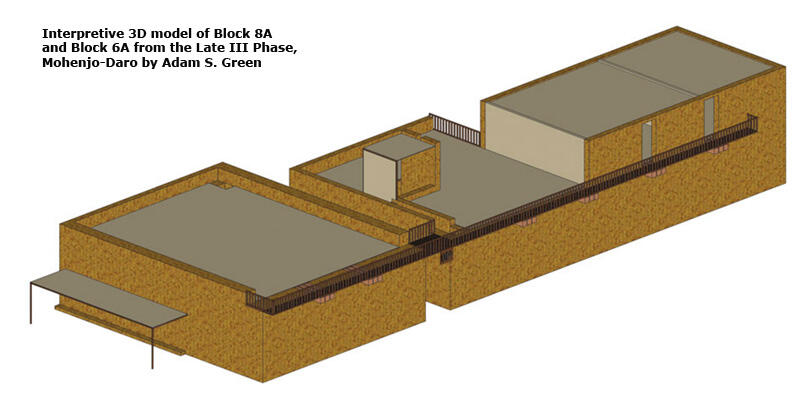A fascinating article that shows how old excavation records together with recent computer modeling techniques can be used to show how a constructed space changed over time, and how that evidence can speak to larger issues in a society. As the author puts is, "digital re-visitation of early archaeological datasets, enhanced with improved theoretical frameworks, can reveal the broad range of socio-political configurations that emerged among the world’s earliest cities and states." In this case, Green zeroes in on a set of buildings whose public access appears to have increased through time. They were opened through entrances to adjacent streets and reconfigured in a way that, he writes, could indicate that they may have been something like an "office" or "hostel" as the original excavator, E.J.H. Mackay suggested.
Archaeologists have always had something – or rather, very much of – the detective in them. This article is a superb example of how investigative science can lead, if not to absolute proof, then to extremely interesting hypotheses that can be further tested to refine our interpretations. One of the values of this paper in particular is Green's ability to relate these findings to theorizing from other contexts, which helps us understand the origins of early city states and economic units. Green concludes: "Small, specialized public spaces may have existed at the interface between the heterarchical groups that appear to have engaged in collective action to build Indus cities. Further digital re-visitation of early excavation reports provides a powerful means of revising and incorporating old interpretation into emerging archaeological scholarship."
Together, the concepts of heterarchy [a system of organization where the elements of the organization are unranked (non-hierarchical) or where they possess the potential to be ranked a number of different ways] and collective action offer potential explanations for how early state societies may have established high degrees of civic coordination and sophisticated craft industries in the absence of exclusionary political strategies or dominant centralized political hierarchies. The Indus civilization (c. 2600–1900 BC) appears to have been heterarchical, which raises critical questions about how its infrastructure facilitated collective action. Digital re-visitation of early excavation reports provides a powerful means of re-examining the nuances of the resulting datasets and the old interpretations offered to explain them. In an early report on excavations at Mohenjo-daro, the Indus civilization’s largest city, Ernest Mackay described a pair of small non-residential structures at a major street intersection as a ‘hostel’ and ‘offce’ for the ‘city fathers’. In this article, Mackay’s interpretation that these structures had a public orientation is tested using a geographical information systems approach (GIS) and 3D models derived from plans and descriptions in his report. In addition to supporting aspects of Mackay’s interpretation, the resulting analysis indicates that Mohenjo-daro’s architecture changed through time, increasingly favouring smaller houses and public structures. Close examination of these small public structures also suggests that they may at times have been part of a single complex.
Above: Figure 8. Interpretive 3D model of Block 8A and Block 6A from the Late III Phase. The model incorporates the assumption that the structures had a shared second level. Details are faithful to archaeological data but reasonably speculative. For example, no signboard has been recovered from Mohenjo-daro, but an example is known from Dholavira (Bisht 1999, 20). Mohenjo-daro’s small public structures may well have included such features. (Derived from Figure 6 and details provided in Mackay 1938.) evaluation of this interpretation.
Note: Log-in or account required at Academia.edu to read the article. Dr. Green can also be emailed for a copy ag952 at cam.ac.uk.

